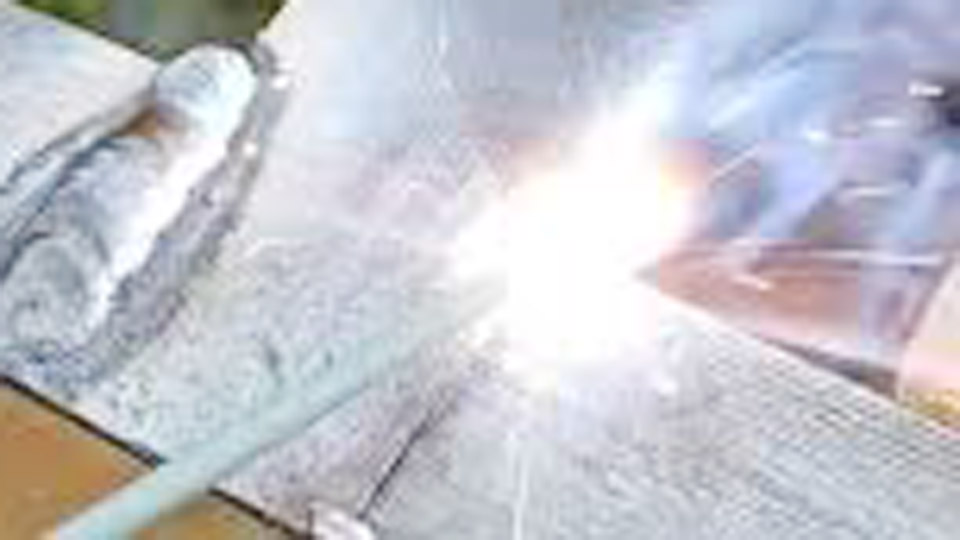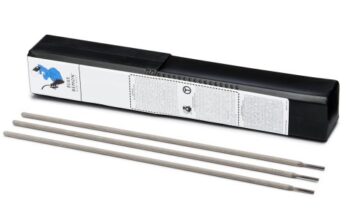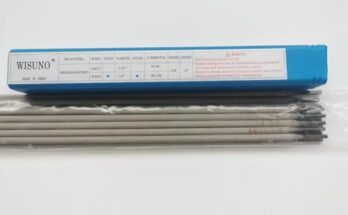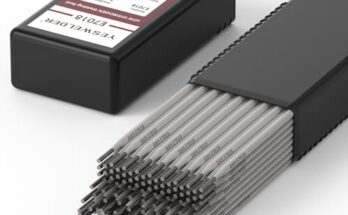If you’ve ever tried stick welding thin sheet metal, you probably realized pretty fast that it’s not as easy as it looks. I remember the first time I tried it — the frustration of burning holes straight through the metal, no matter how carefully I thought I was working.
It’s not impossible. With the right techniques, settings, and a bit of patience, you can get clean, strong welds on thin sheet metal using stick welding. It just takes a different approach compared to thicker materials.

Image by TikTok
I’m going to share everything I’ve learned about how to stick weld thin sheet metal the right way. We’ll go through the setup, techniques, tips, and even a few tricks I wish someone had told me when I first started.
If you’re fixing an old car body, doing home repairs, or working on a small fabrication project, this guide will help you get the results you want.
Why Stick Welding Thin Sheet Metal Is Tricky
Stick welding, or SMAW (Shielded Metal Arc Welding), is a fantastic process for a lot of jobs. It’s tough, portable, and doesn’t need fancy equipment. But thin sheet metal brings a unique set of challenges.
The biggest problem is heat. Stick welding runs hotter than processes like MIG or TIG, and thin sheet metal doesn’t have much mass to absorb that heat. That means it’s really easy to blow through the metal and create holes, called burn-throughs.
Also, thin metal tends to warp when it gets too hot. If you’re not careful, you’ll end up with a wavy, distorted mess instead of a smooth, strong weld.
Once you understand what’s happening and how to control it, you can manage both the heat and the weld to get a beautiful result.
Choosing the Right Electrode for Thin Sheet Metal
Your choice of electrode makes a huge difference when stick welding thin metal. Some rods are just better suited for light work.
Here’s what I recommend based on my experience:
- Use a smaller diameter rod. Go with 1/16″ or 5/64″ electrodes if you can find them. If not, 3/32″ can work if you’re very careful.
- Choose a fast-freeze rod. Electrodes like E6011 or E6013 are great because they cool quickly and don’t build up too much heat.
- Stick with low amperage rods. These are easier to control on thin material.
Here’s a quick table for easy reference:
| Electrode | Diameter | Best For | Notes |
|---|---|---|---|
| E6011 | 1/16″, 5/64″ | Deep penetration, fast freeze | Good for dirty or rusty metal |
| E6013 | 1/16″, 5/64″, 3/32″ | Smoother welds, easy control | Good for clean sheet metal |
In my experience, E6013 is easier for beginners because it’s more forgiving, but E6011 can be a lifesaver if you’re working on slightly dirty or painted surfaces.
Setting the Right Amperage for Thin Sheet Metal
If you crank up the amperage like you would for thick steel, you’ll destroy thin sheet metal in no time.
For thin metals around 16 gauge (about 1.5mm thick) or thinner, you’ll want to set your amperage low — usually between 30 to 60 amps, depending on the rod size and material.
Here’s a simple rule of thumb I follow:
- For 1/16″ rods: 25-45 amps
- For 5/64″ rods: 40-60 amps
- For 3/32″ rods: 50-75 amps
Start on the lower end of these ranges and slowly bump it up if you find the rod sticking too much. Lower heat reduces burn-through and helps you keep better control of the puddle.
Preparing the Sheet Metal Before Welding
Preparation is everything when you’re working with thin sheet metal. Even the smallest bit of rust, oil, or paint can mess up your weld.
Here’s how I always prep my metal:
- Clean it thoroughly with a wire brush or grinder.
- Remove any paint or coatings near the weld zone.
- Use acetone or alcohol to wipe away oils.
- Clamp the metal securely so it doesn’t move while you weld.
You can’t afford surprises when welding thin material. A clean, steady setup gives you a huge advantage right from the start.
Best Welding Techniques for Thin Sheet Metal
Now, let’s talk about actual welding techniques. This is where you can really make or break your weld.
Short, Controlled Welds
I always recommend using short welds, about half an inch to an inch at a time. Welding in short bursts — also called “stitch welding” — lets the metal cool between passes and prevents heat buildup.
Skip Welding
Skip welding is a method where you make a small weld, skip ahead a few inches, and then weld again. Once you have a few spots tacked, you go back and fill in the gaps.
This technique spreads out the heat and minimizes distortion.
Backstep Welding
Backstepping is another neat trick. Instead of welding continuously in one direction, you weld backward in small sections. This reduces internal stress and warping.
Feather the Starts and Stops
Every time you stop a weld, it leaves a crater. If you don’t feather it out, that crater becomes a weak point. Lightly grind or taper the start and stop areas before you make your next pass.
This takes a little extra time but makes your welds look much cleaner and last longer.
Controlling the Heat
Controlling heat is the number one skill you need when stick welding thin sheet metal. Besides using the right amperage and techniques, there are a few more tricks you can use:
- Use a heat sink. Clamp a piece of thick copper or aluminum behind your weld area. It absorbs extra heat and helps prevent burn-through.
- Let the metal cool between passes. Don’t rush. Give it a few seconds to cool after each stitch.
- Keep your arc short. A longer arc throws more heat around. Stay tight and close to the puddle.
Common Mistakes to Avoid
Everyone makes mistakes when learning, but here are the big ones to watch for:
- Too high amperage: This will punch holes in your sheet metal fast.
- Dragging the rod too slowly: Staying too long in one spot overheats the area.
- Welding too long at once: This builds up too much heat and warps the metal.
- Poor surface preparation: Dirt and rust cause porosity and weak welds.
Learn from my mistakes — take your time, be gentle, and respect the thinness of the metal.
Tools That Make Thin Metal Stick Welding Easier
While you can technically stick weld thin sheet metal with just the basics, having a few extra tools makes life much easier.
Here’s what I like to use:
| Tool | Why It’s Helpful |
|---|---|
| Auto-darkening helmet | Easier to see the puddle clearly |
| Small angle grinder | Clean edges, prep craters |
| Copper backing bar | Acts as a heat sink |
| C-clamps and magnets | Hold pieces securely |
| Thin welding gloves | Better feel and control |
Good setup and good tools take half the stress out of welding.
Practice Tips for Beginners
If you’re new to stick welding thin metal, here are a few practice exercises I found super helpful:
- Start on scrap metal before touching your project piece.
- Practice stitching and skip welding techniques.
- Try to weld lap joints (where one piece overlaps another) — they’re easier than butt joints.
- Listen to the sound — a steady sizzle (like bacon frying) means you’re doing it right.
It took me a few sessions before I stopped burning holes all over my practice pieces. Stick with it (pun intended) and you’ll improve faster than you think.
When to Choose Another Welding Method
While it’s absolutely possible to stick weld thin sheet metal, sometimes it’s better to switch to a different process if you can.
MIG and TIG welding offer better control over heat for really thin work, especially below 18 gauge.
If you have access to a MIG welder with a fine-tuned voltage setting or a TIG setup, don’t be afraid to use them. They can make welding thin metal much easier and cleaner.
But if stick welding is your only option — and many times it is — just know that it’s completely possible with the right skills.
Conclusion
Learning how to stick weld thin sheet metal takes patience, but it’s one of the most satisfying skills you can master. I remember how proud I felt the first time I laid down a clean, even bead without blowing a hole straight through.
Start with the right electrode, keep your amperage low, use smart techniques like skip welding and backstepping, and always focus on controlling the heat. Clean prep work and short welds will save you a lot of headaches.
If you take your time and stay patient, you’ll be surprised at how nice your welds can look — even on tricky, thin metal.
Stick welding isn’t just for thick, heavy steel. With a little care and practice, it can handle thin sheet metal beautifully too.
FAQs
Can you stick weld sheet metal without burning through?
Yes, by using low amperage, a small electrode, and short, controlled welds, you can weld sheet metal without burning holes through it.
What’s the best stick rod for thin sheet metal?
I recommend E6013 with a small diameter like 1/16″ or 5/64″ for its smooth, easy-to-control weld puddle.
How low should I set my amperage for thin metal?
For thin metal, you should set your amperage between 30 and 60 amps depending on rod size and thickness of the sheet metal.
Do I need a backing plate when welding thin metal?
Using a copper or aluminum backing plate can help absorb excess heat and prevent burn-through, but it’s not always required.
Is MIG or Stick better for welding thin sheet metal?
MIG is usually easier for very thin metals, but with the right techniques, stick welding can be just as effective for many projects.


